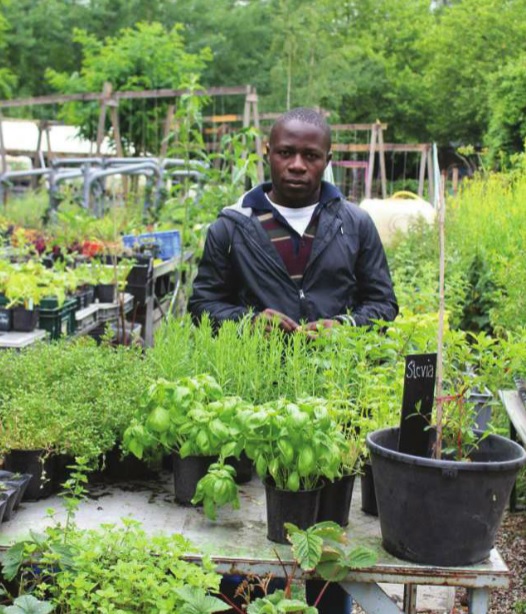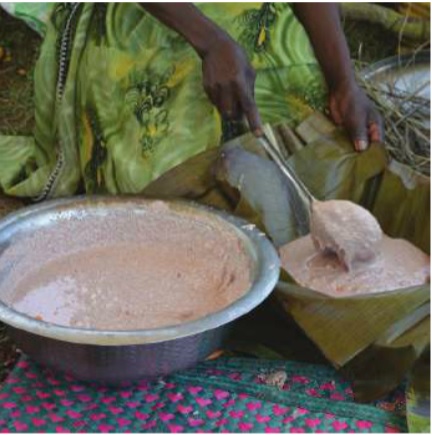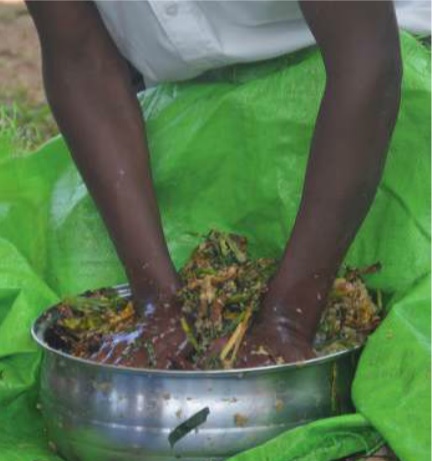
Traditions clash with modern science over lost plants, animals, fish
64-year old Milly Namwanje knows something about the diseases of infants. She had six children of her own and she is now a grandmother of one-month old Sheebah. Unfortunately, Sheebah has a problem that Namwanje has diagnosed – but she is failing to find a cure.
Namwanje says Sheebah cries a lot and when she does, she folds her legs together. Speaking in her native Luganda, she calls the condition “obwooka” and says it is pain the tummy. Doctors describe the same symptoms and call the condition colic. The doctors do not have a cure for it. But Namwanje says she has it. It is a wild mushroom called akatiiko akabaala.
A few drops of water in which the mushroom has been boiled can soothe the baby, she says. Unfortunately despite visiting nearby markets several times, she has failed to find akatiiko akabaala. Instead she is offered the bigger farmed mushroom which she says cannot serve her need.
Namwanje says the mushroom used to grows wild. She says back then it would be preserved as a medicine or to prepare a special soup called ‘esabwe’ eaten by visiting in-laws. That is what she used 20 year ago when her first born was getting married.
“Speak to anyone who lived in Tooro in the 1980s and 90s. They will tell you how innovative we would be with the mushroom,” she says.
She narrates how they would mix it with ground nuts and with roasted meat.
“It has an aroma that you can’t find in the type we have now,” she says.
Unfortunately, Namwanje’s mushroom is just one of many food and medicinal plants that are getting extinct.
On a search for these, The Independent visited Eddie Mukiibi who through an organization called Slow Foods Uganda is preserving some foods at risk of extinction. He names some disappearing foods, some of which he only knows by their local names. There is ‘ensusuti’ – an avocado like plant that was eaten as a vegetable but at times mixed with groundnuts, `empande’ – a type of peas that used to be common in Busoga region, ‘enkolimbo’ – pigeon peas, the deep purple passion fruit which used to be common in Masaka, other fruits – amatugunda, ebigaaga, nziru and ensaali, ‘ekkobbe’—a type of climbing yam, a vegetable known as eggobe and another one called Kumutere which could grow in mountainous areas of Eastern Uganda.
But it is not just plants disappearing. Animals and fish are going too. Fish species like Ningu, kasulu, Nzere, Omukunga, and Nkolongo than used to be common are unheard of today.
Mukiibi says Nkejje (sprat fish) which is a little more available than the other traditional species is only used as animal feeds.
“People ignore their medicinal and nutritional value as a big source of calcium that strengthens the bones and a remedy to joint and back pains,” Mukiibi, who is the Executive Director at Slow Foods, says.
He blames the emergence of hybrids for the disappearance of the traditional foods.
“Hybrids have not just hijacked our natural taste but our traditions too as some foods had cultural attachments,” he says.
He says even for the matooke (green bananas ) which is a staple in the central, western and Southern region, finding the old ‘Nakitembe’ or ‘Nakinyika’ varieties which were among the favorites is a hustle.
“Instead one will get kawanda varieties,” he says in reference to the Kawanda Agriculture Research Institute near Kampala in Wakiso district where many of the new plan varieties are developed.
Mukibi says despite their high yields, they are less tasty. He points at the local small but sweet Ndizi and Bogoya are being replaced by Fhia hybrid varieties and maize where the old variety with hard outer layer and the multicolored ones have almost been wiped out in favour of softer layer ‘Longe’ varieties. The most recent addition is Tego maize variety which was launched in July during the annual agriculture show in Jinja.
Cassava, another staple has suffered the same fate. Scientists say the old cassava is more prone to pests and diseases and the National Agriculture Research Organisation (NARO) has released two new varieties –NAROCASS1 and NAROCASS2 which are said to be high yielding and resistant to diseases cassava mosaic and Brown Streak. Other research institutions have come up with their own varieties. There is NASE; developed at the National Crop Resource Research Institute at Namulonge. Legumes like beans which are a source of proteins for many have not been spared either. The black and climbing types have been abandoned for newer hybrids.


Change inevitable say scientists
Dr. Ambrose Agona, the NARO executive director, also recalls how breast-feeding children would be weaned on pigeon peas as was a common practice in their tribe. He says although some improved varieties of these peas have been made, they do not match the old type in protein content. But he says the shift is unavoidable.
“The climate has changed which necessitated scientists to look for solutions to mitigate the challenges that come with it such as prolonged dry spells and El Nino among others,” he explains.
His view resonates with most experts. In fact, the theme for this year’s World Food Day on Oct.16 is “Climate is changing; Food and Agriculture must too”.
Agona says climate change has allowed pests and diseases to be become stronger and overpower traditional foods. Some have been wiped out. He mentions cassava which was overpowered by the mosaic and banana by the wilt.
But Agona says the traditional foods are not completely lost. He says they are in seed gene banks across the country and at the botanical gardens in Entebbe. He says when scientists develop new varieties; they export the good attributes to the new crop.
Fellow scientist Robert Amayo; a plant pathologist at the National Semi-Arid Resources Research Institute (NaSARRI) in Eastern Uganda agrees. He says sometimes they have to cross breed varieties to get better results that retain only desired characteristics.
“If we only relied on traditional varieties, many would be going hungry with the increase in population since these foods were low yielding,” he says.
But Mukiibi is not convinced.
“Climate change has been there and will always be. It is human activities to blame. Seed multinationals are the ones creating the pressure,” he says.
He says scientists hide behind climate change to sell their ideas and seeds. With the new varieties, he says a banana plantation cannot last 25 years as it used to be. Instead, a farmer has to buy new suckers from time to time.
But Agona dismissed accusations of commercial gimmick. He said even basic thinks like rainfall patterns have changed.
Meanwhile, the Minister of Agriculture, Vincent Ssempijja, says the government is moving ahead at full throttle to research and development high yielding, pest and disease resistant seed for productivity. The strategic foods the government has prioritised include banana, cassava, fish, diary, beans, rice, vegetables, citrus and mangoes.
Emmanuel Zziwa a consultant on climate change adaptation at the FAO office in Uganda says on average, 800,000 Hectares of crops are destroyed by climate-related every year. He warns Uganda will lose US$ 140 – 260 billion between now and 2050, in agriculture and water sectors if no serious actions are taken to adapt to climate change.
‘Food for the future’
In the modern age, Agona says, instead of worrying about disappearing foods and emergency of hybrids, Ugandans should be concerned about the nutritional value of what they consume. For him instead of eating fried potato chips, people should eat the new nutrient rich varieties that scientists are coming up with, included the bio fortified foods.
He says: “The stomach no-longer needs to be full, we are now focusing on quality rather than quantity. Instead of going for food supplements, people should go for these varieties that are highly balanced in terms of nutrition density. We need to avoid excesses.
“Like a child is immunised, food needs to be protected against the vagaries of nature,” he adds.
****
editor@independent.co.ug
 The Independent Uganda: You get the Truth we Pay the Price
The Independent Uganda: You get the Truth we Pay the Price


